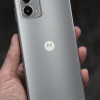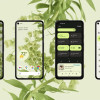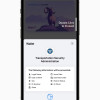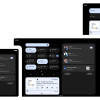State of the Industry
Camera Phones
A year ago, the camera phone phenomenon was still in its infancy. At CTIA 2002, only two models - both from Samsung - were announced that were even capable of connecting to an external camera. Outside of Japan, phones with built-in cameras were still unheard-of.
But in the 12 short months since then, the camera phone wave has moved so quickly that this year's show saw several manufacturers introducing their second-generation camera phone models.
One focus with second-generation models seems to be on making camera phones affordable. Sony Ericsson was certainly the first to recognize this trend with its ground-breaking T300 model, but the T300's camera was attachable. Attachable cameras seem to be on the way out. The Sanyo 8100, Audiovox 8900, and LG 5450 are all designed to bring integrated camera phones to the masses.
Another phone following this trend is the Nokia 3650 (and 3600) camera phone. It's actually one of the most powerful and feature-rich phones on the market, yet still quite affordable, to the point of being a bit of a paradox. I have to think that Nokia is using the 3650/3600 as a loss leader to build momentum for its Series 60 platform (making it essentially a pre-emptive strike against Microsoft's new Smartphone platform).
The 3650 is the first phone for the U.S. to support video messaging, (10-15 second clips). Video is undeniably the direction the technology is headed, but the 3650 is way ahead of the pack in bringing this kind of feature to market.
Push-To-Talk
The biggest buzzword of the show was - without a doubt - Push-To-Talk (PTT). PTT is the "walkie-talkie" feature that Nextel is famous for. Several companies are now competing to bring this feature to GSM and CDMA networks. The PTT hype was already at fever pitch well before the show started. Thankfully, some companies are finally delivering on their promises; some impressive systems were demonstrated live for the first time at CTIA.
The most impressive, in my opinion, was at the Comverse booth, where I tried a live demo of the system developed by Mobile Tornado (who recently partnered with Comverse). The Mobile Tornado system delivered the shortest latency (delay) at the show - a little over 1 second. It's not "instant" like Nextel's system, but it should be fast enough for most people. Trying to hold a conversation with a longer delay can be a tedious and frustrating experience. The Mobile Tornado system also had some impressive features - such as PTT call-waiting - that the other systems apparently lack.
The Expanding Low End
One interesting trend that was apparent at the show is that manufacturers are actively trying to extend the low end of their lineups even lower. Nokia introduced its 2200 series, LG introduced its 3100 and 4010 models, Kyocera announced its KE400 and K110 series, and Motorola announced its C230 at CeBIT the week before. Phones already on the market in this category include the Nokia 1260 and Siemens A56. The emphasis with these phones is price, and the goal is to allow carriers to sell phones to new groups of people, for whom owning a cell phone was previously a luxury they could not afford. Many of these phones are targeted at Latin America, but here in the U.S., these phones also make it easier and more profitable for carriers to offer "free" phones with contracts.


 iPhone 14 Plus Offers a Big Screen For Less
iPhone 14 Plus Offers a Big Screen For Less
 Hands On with the 2023 moto g 5G & moto g stylus
Hands On with the 2023 moto g 5G & moto g stylus
 Android 12 Sports New, Customizable Look
Android 12 Sports New, Customizable Look
 Eight US States to Support Digital Driver’s Licenses in Apple Wallet
Eight US States to Support Digital Driver’s Licenses in Apple Wallet
 Google Tweaks Android Interface for Large Foldables
Google Tweaks Android Interface for Large Foldables

